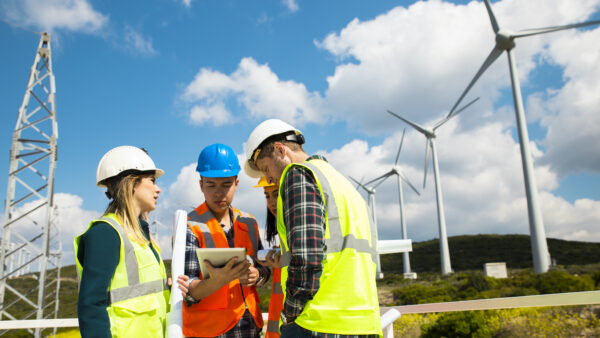
Image: Dreamstime.
The explosion in ‘Proptech’ investment presents the opportunity to make a transformative impact on the built environment, says Arup’s Rick Robinson.
Over the last two decades, the possibilities around ‘smart’ cities and buildings have often been discussed but less often put into practice on a significant scale.
Over the past 12 months, however, we have seen a shift, with a notable increase in investment into making these ideas a reality. According to research by KPMG, in the last quarter of 2017 alone, more than £1.5bn was invested in new ‘Proptech’ businesses – start-up companies using digital technology to create innovations in the property sector.

Robinson: “Continual digital advances”
In part, this is due to continual advances in the capabilities of digital technology. The volume of digital data in the world surpassed non-digital data in around 2002 and is now doubling roughly every three years. This means that as much data was produced in the last three years as in the entire previous history of the human race.
The ability of that data – such as that created by sensors, social media interactions and GPS – to provide new insights into construction, is at an all-time high.
There is also a demographic factor at play. The generation that has grown up with social media as a normal part of their everyday world from an early age is now entering the workforce and housing market. They interact with each other, with businesses and services through an array of online and social channels.
Their expectations are starting to impact the property market, with properties that offer better connectivity and digital services attracting higher rents and purchase prices.
Enitre businesses are digitising
It is now imperative that the construction industry harnesses and adapts with these changes. Digital can no longer be a stand-alone capability for companies operating in this sector. Entire businesses are digitising: building and adopting innovative new tools to empower construction professionals and engineers, and help customers embed digital technology into properties and businesses.
This is the new reality of digital transformation: it is pervasive and all-encompassing.
So, what does all of this look like in practice? What is the impact on the way projects are being run, and where are those businesses who continue to stick rigidly to traditional methods missing out? Below are some real-life examples that illustrate the opportunity at hand.
A well-designed approach to digital technology can achieve improvements in both cost and value. For example, we’ve worked with a London estate to significantly reduce carbon emissions across its portfolio, using intelligent building management systems to collect and analyse real time operational data. This allows us to identify new opportunities to reduce energy usage – driving down operational costs and carbon impact.
The same data can also enable a shift from scheduled maintenance to a performance-based approach, with the potential to further reduce costs and improve asset quality. We’re now looking at how we improve water efficiency, internal air quality and occupant satisfaction using the information now available.
Tech to coordinate infrastructure work
Technology can also help us coordinate significant infrastructure construction with ongoing maintenance work. Managing this is becoming more complex as new developments typically have several pieces of infrastructure being constructed simultaneously. We developed a bespoke mobile application for one organisation that was undertaking a three-year programme of upgrades to help them manage this.
The app delivered accurate information directly to staff across all workstreams and locations. It provided a single source of information, visualised progress made in an easily-understandable way, and removed information siloes and duplication – resulting in significant efficiency gains.
We’ve also demonstrated that similar technologies help mitigate the disruption felt by occupants during the construction phase. At one university, where construction activity is set to disrupt the entire campus for the coming two to three years, we’re helping preserve the quality of student living and learning by providing tools that offer adaptive way-finding; making use of apps, e-ink displays and ‘near-field’ communication technology to give students personalised directions that update daily as construction reshapes the campus around them.
As these examples demonstrate, digital technology is already having a tangible, daily impact on the built environment and how we interact with it. Businesses that do not adapt and integrate this technology will set themselves at a disadvantage.
This is particularly the case for larger-scale developments, likely to span the course of 10 to 25 years. It’s imperative that we proactively embed digital tools and utilise new information to improve the buildings and places that we create.
Rick Robinson is digital properties and cities leader at Arup










